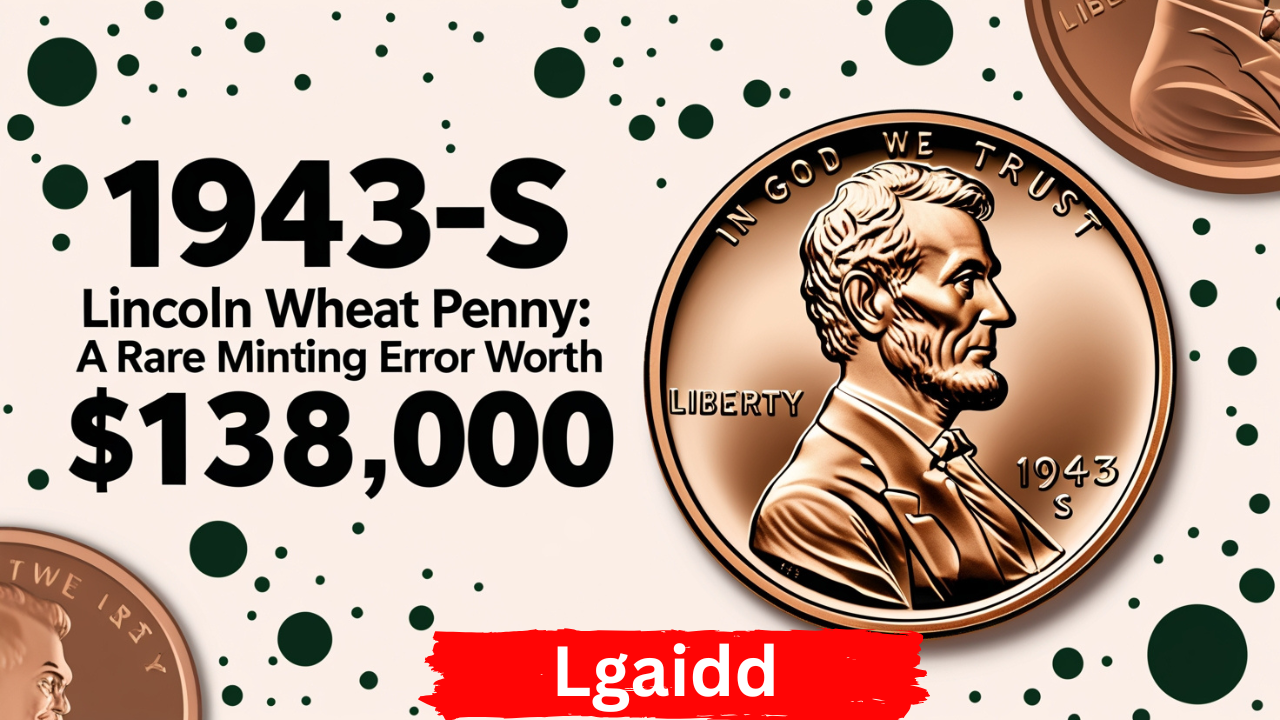1943-S Lincoln Wheat Penny A Rare Minting Error Worth $138000: During World War II, copper became a critical resource for wartime production. To conserve this valuable material, the U.S. Mint began producing steel pennies coated with zinc in 1943. However, a small number of bronze blanks from 1942 were mistakenly struck, leading to one of the most sought-after errors in U.S. coinage history.
Among these rare errors is the 1943-S Lincoln Wheat Penny, a coin so unique and desirable that one sold for an impressive $138,000 at auction. This coin is not only a numismatic treasure but also a piece of American history.
What is the 1943-S Lincoln Wheat Penny?
The 1943-S Lincoln Wheat Penny was minted at the San Francisco Mint. Unlike the common steel pennies of 1943, this coin was struck on a leftover bronze planchet used for pennies in 1942.
This error occurred during the transitional period when the Mint switched materials for penny production. Only a handful of these bronze coins were produced, making them exceptionally rare.
Distinctive Features of the 1943-S Bronze Penny
Collectors can identify this rare coin by examining several key characteristics:
- Weight
- Bronze pennies weigh approximately 3.11 grams, compared to the lighter 2.7 grams of steel pennies.
- Color
- The bronze composition gives the coin a reddish-brown hue, unlike the silvery appearance of zinc-coated steel coins.
- Material Composition
- Bronze pennies are non-magnetic, while steel coins are attracted to magnets.
| Feature | Steel Penny | 1943-S Bronze Penny |
|---|---|---|
| Weight | 2.7 grams | 3.11 grams |
| Color | Silvery appearance | Reddish-brown |
| Magnetism | Magnetic | Non-magnetic |
| Mint Mark | Various | San Francisco (S) |
Why is it So Valuable?
The value of the 1943-S Lincoln Wheat Penny lies in its incredible rarity and historical significance.
- Limited Numbers: Only a few bronze pennies from 1943 are known to exist, making them highly desirable to collectors.
- Auction Record: One of these coins sold for $138,000 in 2016, a testament to its demand and value.
How to Authenticate a 1943-S Lincoln Wheat Penny
Due to its value, counterfeit versions of this coin are common. Authenticating your penny involves a combination of visual inspection and professional evaluation:
- Weight Test: Use a precision scale to check if the coin weighs approximately 3.11 grams.
- Magnet Test: If the coin is magnetic, it is a steel penny, not bronze.
- Professional Grading: Submit the coin to a reputable grading service like PCGS (Professional Coin Grading Service) or NGC (Numismatic Guaranty Corporation).
Historical Significance of the 1943-S Penny
The 1943-S Lincoln Wheat Penny represents a fascinating chapter in U.S. history. During a time of global conflict, the Mint adapted to material shortages, inadvertently creating this rare minting error.
FAQs
Why is the 1943-S bronze penny so valuable?
Its value comes from its extreme rarity and the historical context of its production during World War II.
How can I tell if my 1943 penny is made of bronze?
Check the coin’s weight (around 3.11 grams) and color (reddish-brown). Steel pennies are lighter and silvery.
What’s the best way to confirm its authenticity?
A professional grading service like PCGS or NGC can authenticate and grade your coin, ensuring its legitimacy.
The 1943-S Lincoln Wheat Penny is more than a coin—it’s a tangible piece of history. With its unique origin, exceptional rarity, and remarkable value, this penny holds a special place in the world of numismatics.
